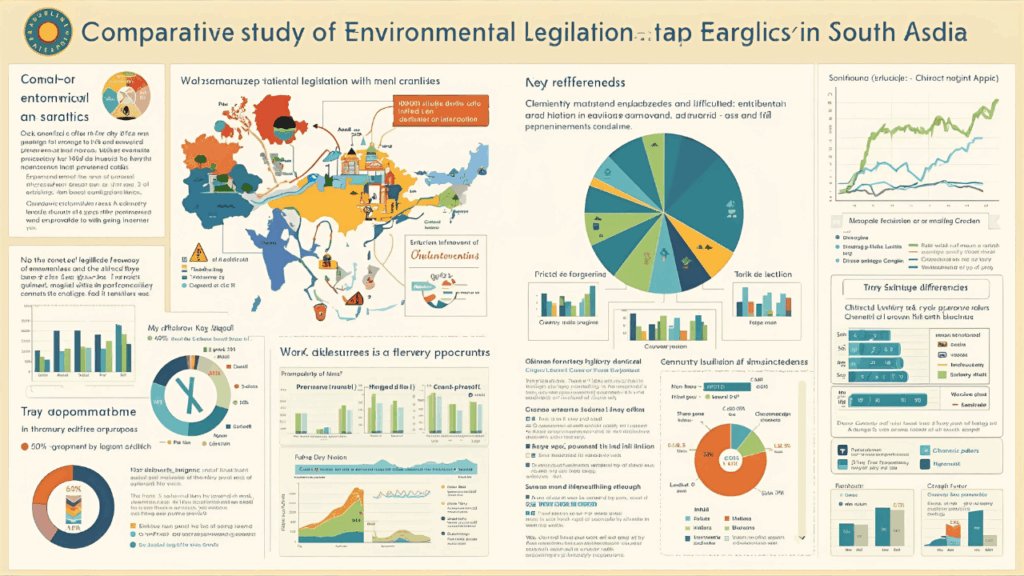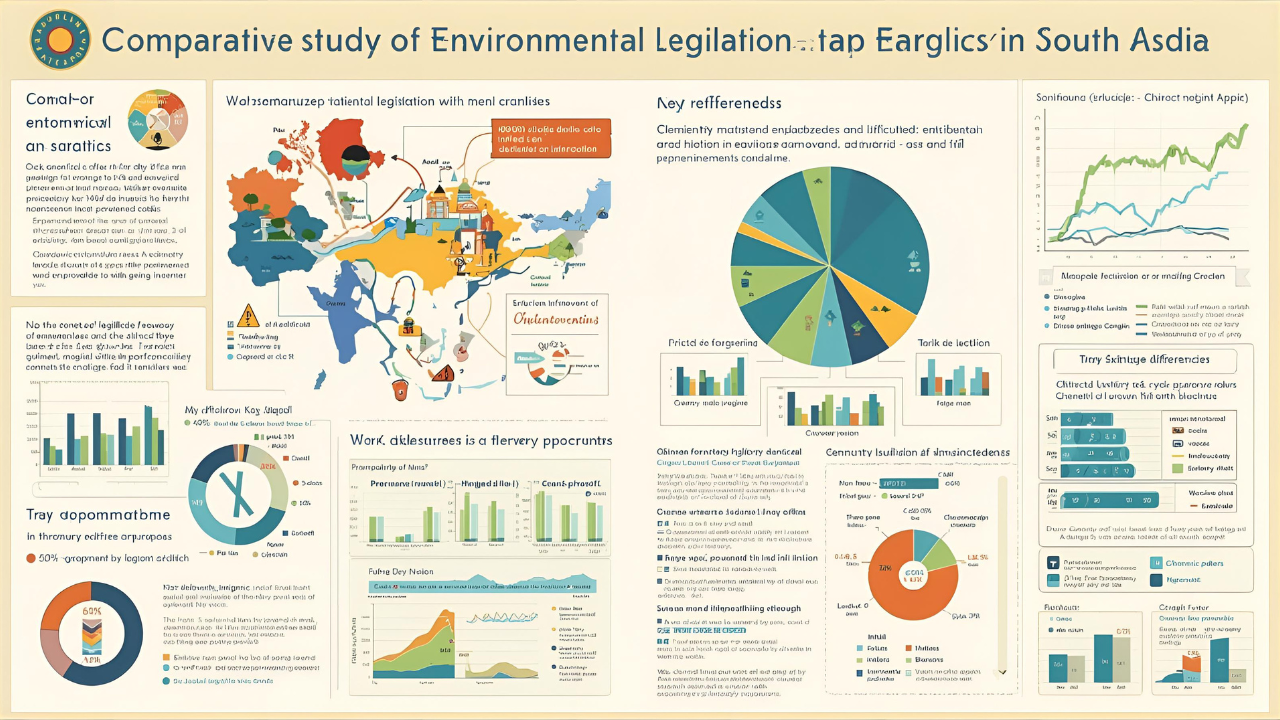
South Asia, home to nearly a quarter of the world’s population, faces enormous environmental challenges such as air and water pollution, deforestation, biodiversity loss, and climate vulnerability. To address these concerns, countries in the region have enacted a range of environmental legislations, influenced by their socio-economic priorities, political systems, and international obligations. While similarities exist due to shared ecosystems and development pressures, each country has crafted unique frameworks for environmental governance.
Environmental Legislations in Major South Asian Countries
India
India has one of the most comprehensive environmental legal frameworks in the region.
- Key Laws: Water (Prevention and Control of Pollution) Act, 1974; Air (Prevention and Control of Pollution) Act, 1981; Environment (Protection) Act, 1986; Forest Conservation Act, 1980; Wildlife Protection Act, 1972.
- Institutions: Central Pollution Control Board (CPCB), National Green Tribunal (NGT).
- Highlights: Strong judicial activism, application of Polluter Pays and Precautionary Principle, integration of constitutional provisions (Articles 48A & 51A(g)).
Pakistan
Pakistan’s environmental laws are evolving under increasing climate threats.
- Key Laws: Pakistan Environmental Protection Act, 1997; Forest Act, 1927; Climate Change Act, 2017.
- Institutions: Pakistan Environmental Protection Agency (Pak-EPA), Climate Change Council.
- Highlights: Establishment of environmental tribunals, climate-specific legislation, and policies addressing deforestation and industrial pollution.
Bangladesh
As one of the most climate-vulnerable nations, Bangladesh has focused on adaptation and resource protection.
- Key Laws: Environment Conservation Act, 1995; Wildlife Conservation and Security Act, 2012; Forest Act, 1927.
- Institutions: Department of Environment (DoE).
- Highlights: Strong emphasis on disaster management, coastal zone protection, and integration of environmental law with poverty alleviation programs.
Nepal
Nepal has gradually built an environmental framework after democratization.
- Key Laws: Environmental Protection Act, 1997; National Parks and Wildlife Conservation Act, 1973; Forest Act, 1993.
- Institutions: Ministry of Forests and Environment, National Environment Protection Council.
- Highlights: Focus on community forestry, biodiversity conservation, and eco-tourism, with gradual judicial interventions for environmental rights.
Sri Lanka
Sri Lanka has a relatively advanced legal system for environmental management.
- Key Laws: National Environmental Act, 1980; Fauna and Flora Protection Ordinance, 1937; Forest Ordinance.
- Institutions: Central Environmental Authority (CEA).
- Highlights: Strong regulatory framework, environmental impact assessments (EIAs) made mandatory, and proactive use of environmental courts.
Common Themes Across South Asia
Despite differences, several commonalities exist in the region’s environmental laws:
- Colonial Legacy – Many forest and wildlife laws originated during British rule.
- Pollution Control Laws – Inspired by global frameworks in the 1970s and 1980s.
- Judicial Activism – Courts in India, Pakistan, and Bangladesh have expanded the right to a clean environment under constitutional provisions.
- Institutional Weaknesses – Enforcement remains a major challenge across the region.
- Climate Change Focus – All countries are increasingly enacting policies in line with global agreements like the Paris Accord.
Comparative Insights
- India vs. Pakistan: India’s environmental jurisprudence is more developed, while Pakistan has pioneered climate-specific legislation.
- Bangladesh vs. Nepal: Bangladesh emphasizes disaster management, whereas Nepal focuses on community-driven conservation.
- Sri Lanka vs. India: Both have advanced EIA systems, but India’s NGT offers faster dispute resolution.
Challenges in Implementation
- Weak Enforcement: Corruption, lack of resources, and poor monitoring limit effectiveness.
- Conflicting Priorities: Rapid industrialization often overrides environmental safeguards.
- Public Awareness: Limited knowledge among citizens reduces pressure for compliance.
- Cross-Border Issues: Shared rivers, air pollution, and wildlife migration require regional cooperation.
Overview Table
| Country | Key Laws | Institutions | Key Focus Areas |
|---|---|---|---|
| India | Water Act 1974, Air Act 1981, EPA 1986 | CPCB, NGT | Pollution control, biodiversity, forests |
| Pakistan | Environmental Protection Act 1997, Climate Act 2017 | Pak-EPA, Tribunals | Climate change, industrial pollution |
| Bangladesh | Environment Conservation Act 1995, Wildlife Act 2012 | DoE | Coastal protection, disaster management |
| Nepal | Environmental Protection Act 1997, Forest Act 1993 | Ministry of Environment | Community forestry, biodiversity |
| Sri Lanka | National Environmental Act 1980, Fauna & Flora Ordinance | Central Environmental Authority | EIAs, conservation, pollution control |
FAQs
Q1. Which South Asian country has the most developed environmental legal framework?
India, due to its comprehensive laws, constitutional backing, and the National Green Tribunal.
Q2. What is the major environmental focus of Bangladesh?
Bangladesh prioritizes disaster management and coastal zone protection due to climate vulnerability.
Q3. Do South Asian countries collaborate on environmental issues?
Yes, but cooperation is still limited; shared challenges like river pollution and climate change demand stronger regional frameworks.

